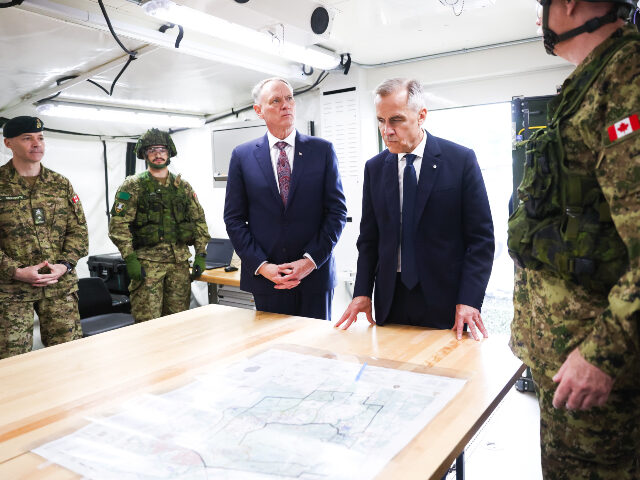Trump Win: Canada Pledges to Hit NATO Defense Spending Target Early

Canadian Prime Minister Mark Carney on Monday promised to boost defense spending enough to hit the North Atlantic Treaty Organization (NATO) target five years early.
The current NATO guideline calls for member nations to spend two percent of their Gross Domestic Product (GDP) on defense. During his first term, President Donald Trump criticized many NATO members for failing to meet this target.
As of last year, NATO said a record 23 out of its 32 members were spending two percent of GDP on defense – more than double the number of countries which complied in 2020. Germany, the Netherlands, Norway, and Turkey joined the club last year. Much of this spending increase was clearly driven by apprehension over Russia’s invasion of Ukraine.
Canada is among the countries that still have not met the NATO requirement, spending only about 1.4 percent of its GDP on defense in 2024. Carney promised during a speech at the University of Toronto on Monday that his government would finally meet the defense spending target this year, “half a decade ahead of schedule.”
Carney was referring to his Liberal Party’s timetable for increased defense spending, established under his predecessor Justin Trudeau.
“Now is the time to act with urgency, force, and determination,” he said. “Our military infrastructure and equipment have aged, hindering our military preparedness. Only one of our four submarines is seaworthy. Less than half of our maritime fleet and land vehicles are operational.”
“More broadly we are too reliant on the U.S.,” he continued. “The United States is beginning to monetize its hegemony: charging for access to its markets and reducing its contributions to our collective security. We should no longer send three quarters of our defense capital spending to America.”
One of Canada’s new defense goals is improved radar and undersea coverage of the Arctic region, where Russia is becoming more active. Canada announced in May that it plans to purchase its new radar systems from Australia.
“In a darker, more competitive world, Canadian leadership will be defined not just by the strength of our values, but also by the value of our strength,” he said.
U.S. Ambassador to Canada Pete Hoekstra applauded Carney’s announcement, ignoring the prime minister’s digs at the United States and his silly insistence on getting a pat on the head for finally hitting the NATO target ten years late, instead of 15 years late like his party wanted.
“This makes the alliance stronger, allows us to put in place the things that we need to have in place to keep the world a safer place,” Hoekstra told CBC News.
Reuters noted that Carney’s commitment remains well below the increase to five percent of GDP recommended by NATO Secretary-General Mark Rutte in May.
Rutte advised a “hard spend” of between three percent and 3.5 percent of GDP, plus another 1.5 percent on “broader security-related items” such as infrastructure and cybersecurity, to reach the five percent total – a figure demanded by President Trump, and evidently endorsed by most of the NATO allies. Rutte expected the five percent figure to be formally endorsed by the alliance at its next summit on June 24.
Carney would probably balk at hitting 3.5 percent or five percent, as he is already evading questions about how his administration plans to reach two percent in the face of mounting budget deficits. Also, one reason the European powers seem willing to endorse a higher spending level is the possibility that Trump will reduce American troop strength in Europe, which would not directly affect Canada.